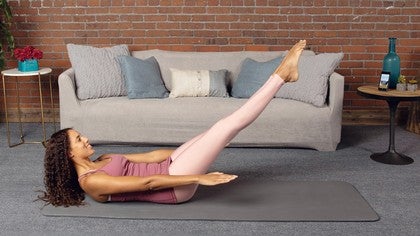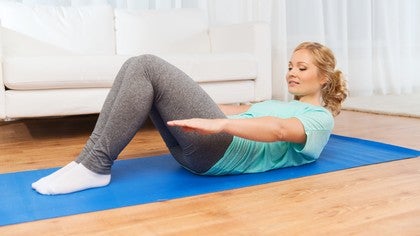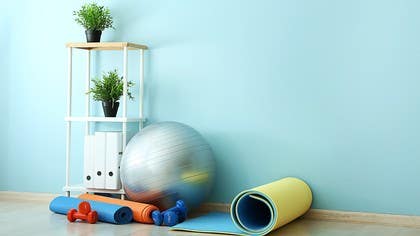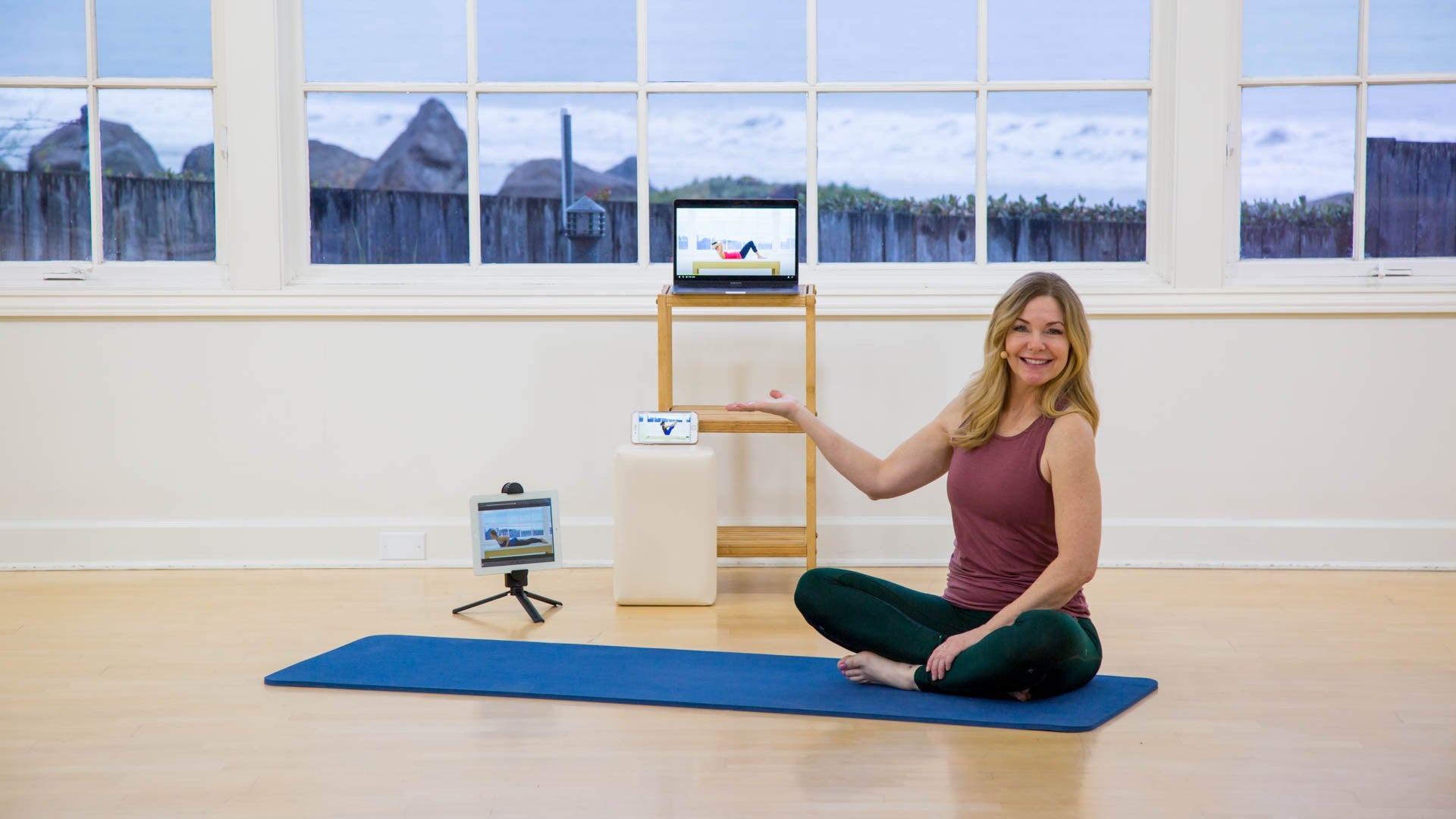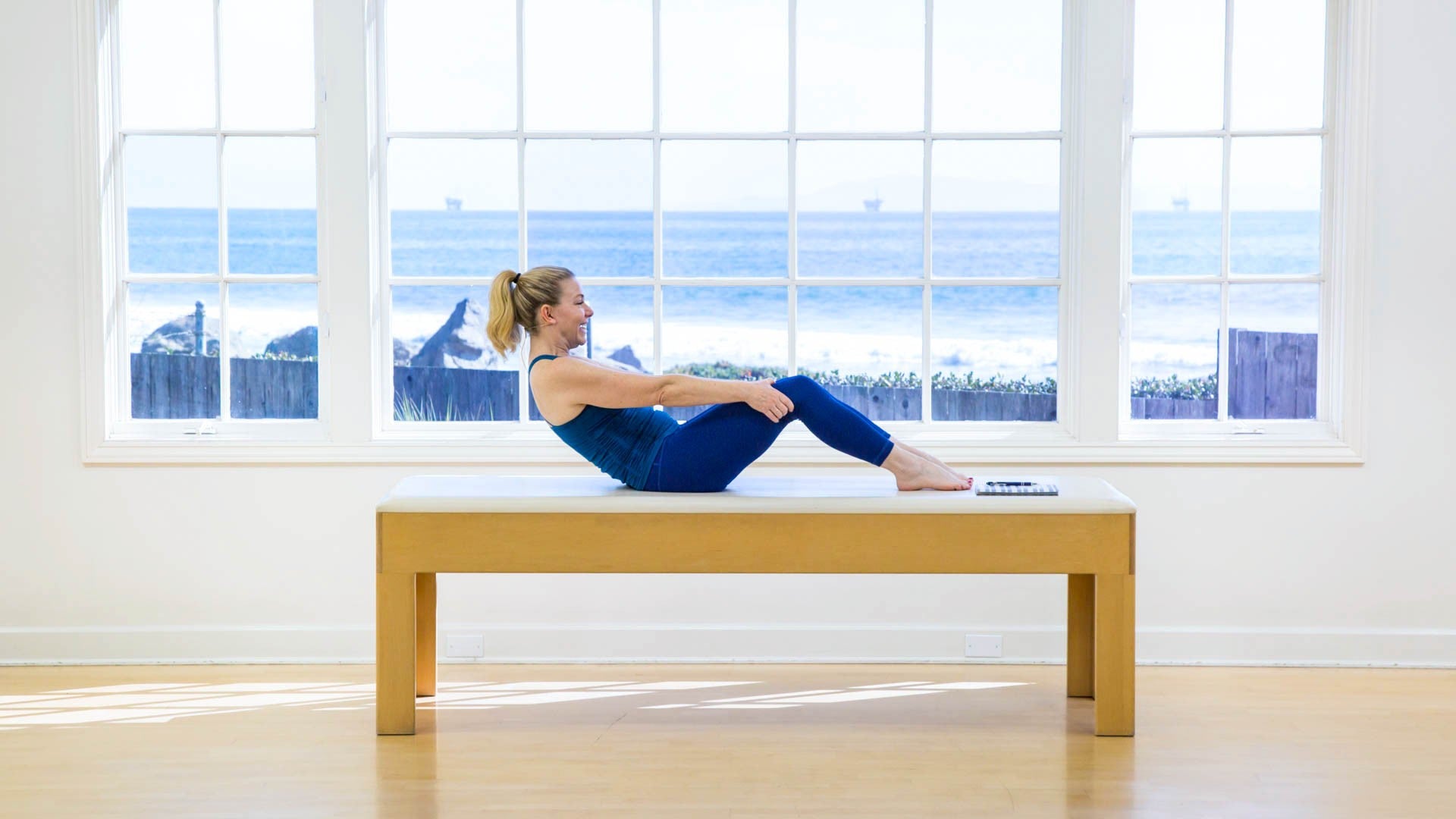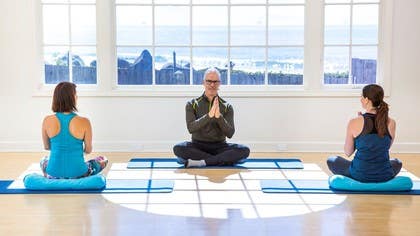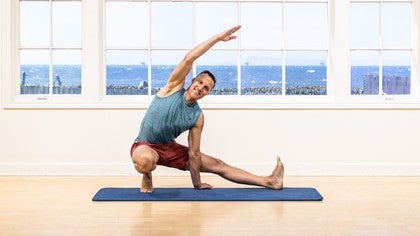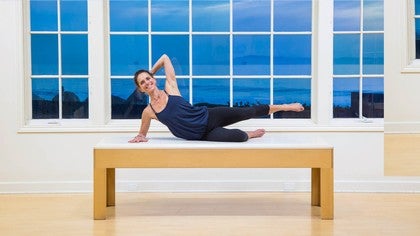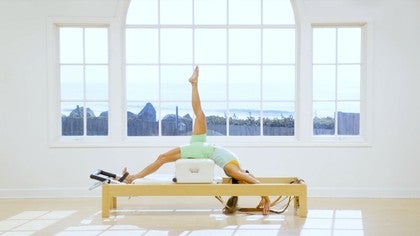
Starting Your Pilates Practice Online
Congratulations, you’re planning to start an online Pilates practice! Maybe you’ve heard that Pilates improves posture, strengthens the body (especially the “core”) and focuses the mind. It’s all true. Whether it’s because of COVID-19, a busy schedule, or a limited budget, streaming or “virtual” Pilates is more popular than ever before. Practicing in front of your device rather than under the watchful eye of an instructor in a Pilates studio offers both advantages and challenges for the novice. Read on to discover how Pilates newbies can get the most out of an online-only Pilates practice.
Online Options
Beginning a Pilates practice online removes many of the obstacles that can keep you from reaching your goals. For example, if you don’t have a lot of time for self-care, eliminating the commute to a gym or Pilates studio frees up some extra time in the day. You can squeeze a workout in whenever you find yourself with some free time: between Zoom calls for work, while a child naps or while you’re waiting for the UPS guy. If you’re on a budget, online Pilates tends to be a lot less expensive than going to a studio. And if you’re shy about learning a new skill in front of an audience, you can try it out in the privacy of your own living room before venturing out to a group class.
To begin your home practice, look for a program or web site that has content appropriate for beginners. There are seemingly unlimited Pilates workouts on offer on YouTube, but how do you know if the workouts shown are effective and safe? A reputable site that is dedicated solely to Pilates can be a better bet. Pilates Anytime offers one of the largest libraries of streaming Pilates workouts, with many options for absolute beginners. You can also follow reputable Pilates instructors on social media to find those who provide by-donation or free content.
Equipment
Pilates studios are equipped with specially designed equipment called apparatuses, such as the famous Reformer. The backbone of Pilates, however, is a series of Mat exercises created by Pilates creator Joseph Pilates. These exercises require no special equipment other than a Mat, making them especially well-suited to the person exercising at home. Over the past decades, these core exercises have spawned endless creative variations, ensuring that you’ll never be bored.
The only equipment needed for Pilates is a soft, supportive exercise Mat. A regular yoga Mat doesn’t provide enough cushion for the spine, especially if you will be working out in an area with hard flooring. Try folding your yoga Mat in half, or doubling up if you have an extra one. You could also put a towel underneath or on top of your yoga Mat. Over time, you may decide to invest in some small handheld props like a Pilates Magic Circle or a playground ball, or a pair of light hand weights. Keep in mind that learning the Mat exercises with your own body as resistance offers plenty of challenges at the start of your Pilates journey.
Live VS Recorded
When you begin your practice at home, you’ll have the choice of on-demand streaming video, where you stream a pre-recorded workout at your convenience and live workouts that you stream through a meeting platform such as Zoom. Think of the former as the modern version of the old Jane Fonda workout tapes that you could watch as many times as you like, on your schedule. Pre-taped classes can be found on YouTube or fitness websites (think ClassPass or Pilates Anytime). To participate in a live class, you tune in (often with a distinct code or URL link) and participate in the class as it happens. What’s the difference for the person exercising at home? A pre-recorded class offers convenience, the ability to be paused, rewound, or sped-up. Pre-recorded classes tend to have better production values: think professional lighting, multiple camera angles, and fewer bloopers. Live classes are often filmed in someone’s living room, and the sound, lighting, and cinematography tend to have a DIY aesthetic that might take some getting used to. A live class is more like “appointment television” in the days before streaming (remember those?), so if you have trouble sticking to your goals, a live class can offer a sense of urgency: you have to show up in front of your device at a certain time or you’ll miss out. On a live platform like Zoom, the instructor can see the participants and offer feedback in real-time. Participants may be able to see one another as well, helping to create a sense of community. Finally, a live class adds an element of surprise. You never know when the instructor’s child or pet is going to make an appearance.
For absolute beginners, trying to understand the subtleties of Pilates through a screen is challenging. You’ll be watching the screen, listing to the verbal instruction, and moving simultaneously. Even in a virtual private lesson (one-on-one Zoom, WhatsApp or FaceTime sessions with an instructor), participants rely only on visual and verbal cues instead of tactile or hands-on cueing. Perhaps your online practice will eventually inspire you to start an in-person practice. A hybrid practice combines the best of both worlds.
Motivation
It’s hard to stay motivated when working out on your own without a teacher. To track your progress independently, try filming yourself on your phone performing exercises that are good yardsticks of your progress. The Roll Up, for example, will reveal improvements in strength and flexibility over time.
Finally, if you are seeking more connection and inspiration from the Pilates community, seek out your tribe online. Pilates instructors post creative content on social media, including tutorials and workouts. Also check out the March Matness community, which has spawned its own hashtag. Created by master Pilates instructor Benjamin Degenhardt, the monthlong celebration of the original Pilates Mat work will help you jumpstart your own Pilates practice.
Comments
You need to be a subscriber to post a comment.
Please Log In or Create an Account to start your free trial.


